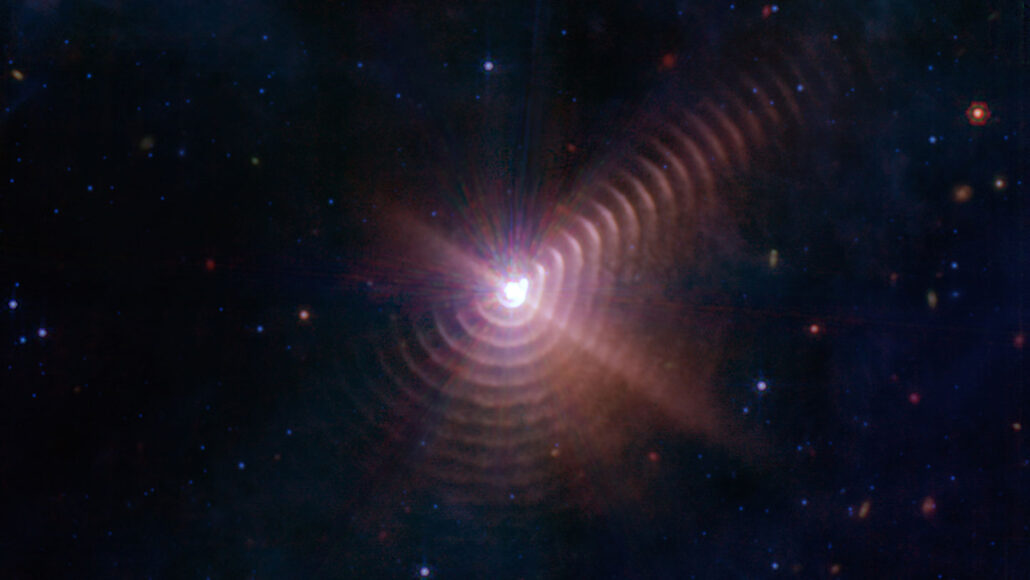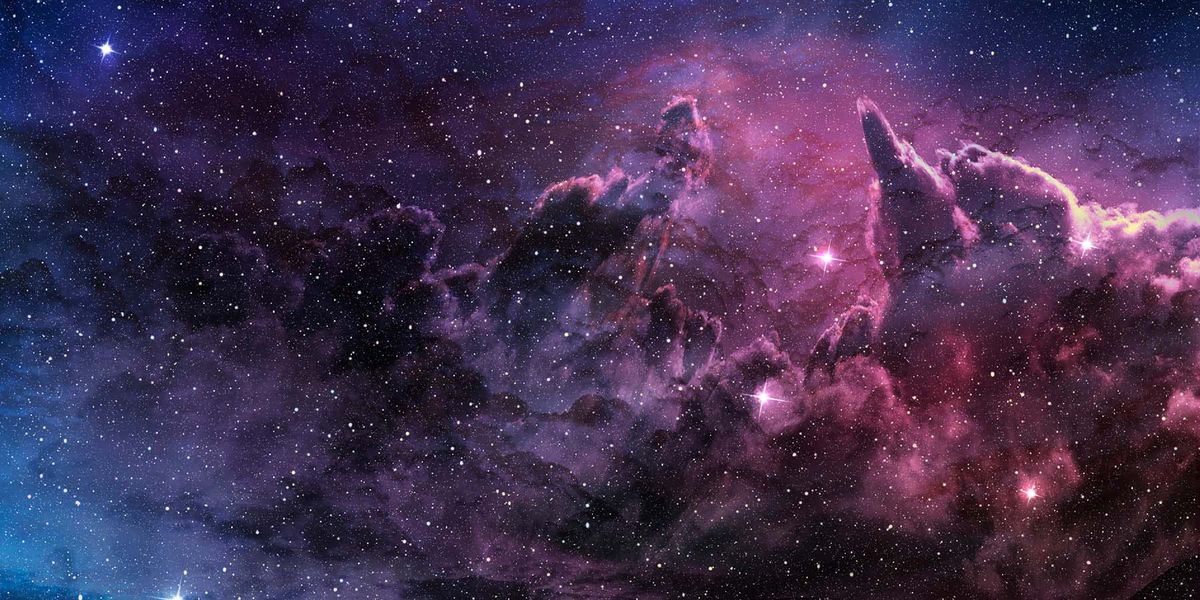Astronomers Saw Starlight Pushing Space Dust For The First Time
Astronomers saw starlight pushing space dust for the first time in our galaxy is revealing how light pushes around matter. This is the first direct evidence that stellar light pressure alters the motion of interstellar dust. Such radiation pressure directs the creation of gas clouds surrounding dead stars and affects the clearing of dust from regions near newborn stars.
Author:Suleman ShahReviewer:Han JuOct 19, 2022910 Shares454.7K Views

Astronomers saw starlight pushing space dust for the first timein our galaxy is revealing how light pushes around matter. This is the first direct evidence that stellar light pressure alters the motion of interstellar dust.
Such radiation pressure directs the creation of gas clouds surrounding dead stars and affects the clearing of dust from regions near newborn stars. In their article published in Nature on October 13th, astronomer Yinuo Han and colleagues report using the dust pattern surrounding a star pair 5,600 light-years away in the Cygnus constellation as a rare laboratory to study the impact in action.
Astrophysicists have known for a long time that the dust emitted by WR 140 and its companion is created when gas from the two stars collides and condenses into soot. Over the span of 16 years of imaging, however, we can see that the dust is speeding away from the stars.
Researchers estimate that stellar dust travels at a speed of 6.5 million kilometers per hour when it leaves the stars and that this speed increases to approximately 10 million kilometers per hour after a year. It would take the dust only 15 hours to get from the sun to Earth at that speed.
The discovery was made by analyzing the relative motion of concentric dust shells over several years.
According to Han of the University of Cambridge, the researchers' calculations reveal that the pressure imposed by light reflected from the stars is the force propelling the dust.
“„Radiation pressure [becomes apparent] only when we put all the images next to each other.- Han from the University of Cambridge
Those dust layers are not only being pushed by the light, but they also stretch further than any telescope has been able to view before this year. Han and colleagues write in Nature Astronomyon October 12 that images from the James Webb Space Telescope, or JWST, show more clearly than ever before the dusty layers surrounding WR 140 and its companion.
The complex patterns surrounding the stars look like a giant spider webat first glance. Researchers have determined that these massive dust cones are actually growing dust shells. Each new one takes eight years to form as the stars complete one orbit on their orbital paths. Since we now view the shells from the side, they resemble rings in cross-section, as Han explains.
Because the stars' distances from one another vary as they orbit one another, the patterns don't perfectly enclose the stars. The density of the colliding gas is too low to condense to dust when the stars are far away, as predicted by the scientists.
The gas's poor condensation even at the densest interstellar distances startled them. This data shows the existence of a dust formation "Goldilocks zone": Only at the optimal distance from each other do the stars produce dust, in the shape of a sequence of dust shells that ripple outward from the binary.
"Their Goldilocks zone is a new hypothesis," says Andy Pollock, an astronomer at the University of Sheffield in England who was not involved in either study. “A similar sort of thing happens in my field of X-rays.”
Conclusion
Based on his research, Pollock hypothesizes that there is a Goldilocks zone for X-rays emanating from the stars since WR 140 and its partner produce more X-rays as the stars approach each other but fewer as they come very close together. “It would be interesting to see if there’s any connection” between the two types of Goldilocks zones, he says. “All of this must somehow fit together.”
Jump to

Suleman Shah
Author
Suleman Shah is a researcher and freelance writer. As a researcher, he has worked with MNS University of Agriculture, Multan (Pakistan) and Texas A & M University (USA). He regularly writes science articles and blogs for science news website immersse.com and open access publishers OA Publishing London and Scientific Times. He loves to keep himself updated on scientific developments and convert these developments into everyday language to update the readers about the developments in the scientific era. His primary research focus is Plant sciences, and he contributed to this field by publishing his research in scientific journals and presenting his work at many Conferences.
Shah graduated from the University of Agriculture Faisalabad (Pakistan) and started his professional carrier with Jaffer Agro Services and later with the Agriculture Department of the Government of Pakistan. His research interest compelled and attracted him to proceed with his carrier in Plant sciences research. So, he started his Ph.D. in Soil Science at MNS University of Agriculture Multan (Pakistan). Later, he started working as a visiting scholar with Texas A&M University (USA).
Shah’s experience with big Open Excess publishers like Springers, Frontiers, MDPI, etc., testified to his belief in Open Access as a barrier-removing mechanism between researchers and the readers of their research. Shah believes that Open Access is revolutionizing the publication process and benefitting research in all fields.

Han Ju
Reviewer
Hello! I'm Han Ju, the heart behind World Wide Journals. My life is a unique tapestry woven from the threads of news, spirituality, and science, enriched by melodies from my guitar. Raised amidst tales of the ancient and the arcane, I developed a keen eye for the stories that truly matter. Through my work, I seek to bridge the seen with the unseen, marrying the rigor of science with the depth of spirituality.
Each article at World Wide Journals is a piece of this ongoing quest, blending analysis with personal reflection. Whether exploring quantum frontiers or strumming chords under the stars, my aim is to inspire and provoke thought, inviting you into a world where every discovery is a note in the grand symphony of existence.
Welcome aboard this journey of insight and exploration, where curiosity leads and music guides.
Latest Articles
Popular Articles
